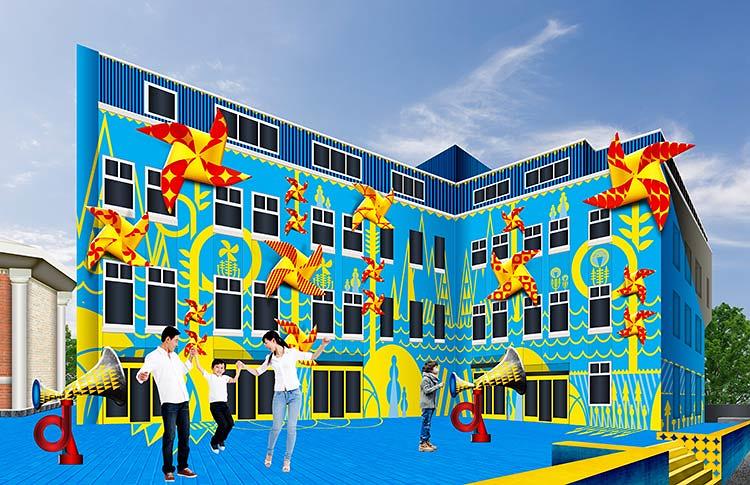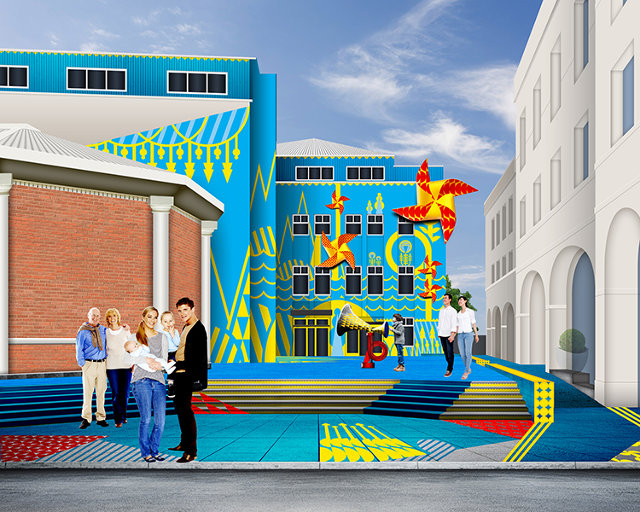Interaction with the outside of a building isn't something that happens often, unless the passerby takes a picture or points out the design to someone else. George Zisiadis wants to change that with his new design for the Santa Cruz Museum of Art and History.
His proposed design intends to place a 10-foot pinwheel on the side of the building that is connected to tubes in the plaza below. If a person blows in the tube, the pinwheel will start spinning. Zisiadis says that he wants the exterior to have some of the interactive elements that are featured inside the museum.
"They want people to engage with their art in a very hands-on way, which I find very empowering and inspiring," Zisiadis told Fast Company. "I wanted to extend this idea to the physical structure of the building itself.”
He wants to keep the mechanism driving the pinwheel mysterious in order to make the experience more fun for visitors, but it's pretty simple. When someone blows into the tube, hidden microphones pick up the sound and connected motors then make the pinwheel spin.
Zisiadis hopes that his design will encourage people to interact with the whole building and transform the way they perceive public space.
Related Stories
| Aug 19, 2011
Enhanced acoustical design
Ambient noise levels in some facility types are trending up and becoming a barrier to clear communication between building occupants.
| Jul 22, 2011
The Right Platform for IPD
Workstations for successful integrated project delivery, a white paper by Dell and BD+C.
| Jul 22, 2011
High-performance windows and doors
Learning objectives After reading this article, you should be able to: Understand issues of thermal performance and energy efficiency in relation to window and door systems; describe optimal detailing of the window-wall interface and how it contributes to building performance, sustainability, and occupant well-being; understand how durability contributes to sustainable windows/doors; and list sustainable O&M requirements for window and door systems.
| Jul 21, 2011
Falling Architecture Billings Index reflects decrease in design demands
This months Architecture Billings Index (ABI), provided by the American Institute of Architects, is almost a full point lower than last month’s reported score. June’s reading of 47.2 was short of the required 50 to achieve billings increases, making July’s reading of 46.3 an unwelcome sign of market tidings.
| Jun 29, 2011
New leadership role for architects in net-zero design
BD+C Editorial Director Rob Cassidy talks with RNL Design's Tom Hootman, AIA, about the changing role of architects in net-zero designs.
















